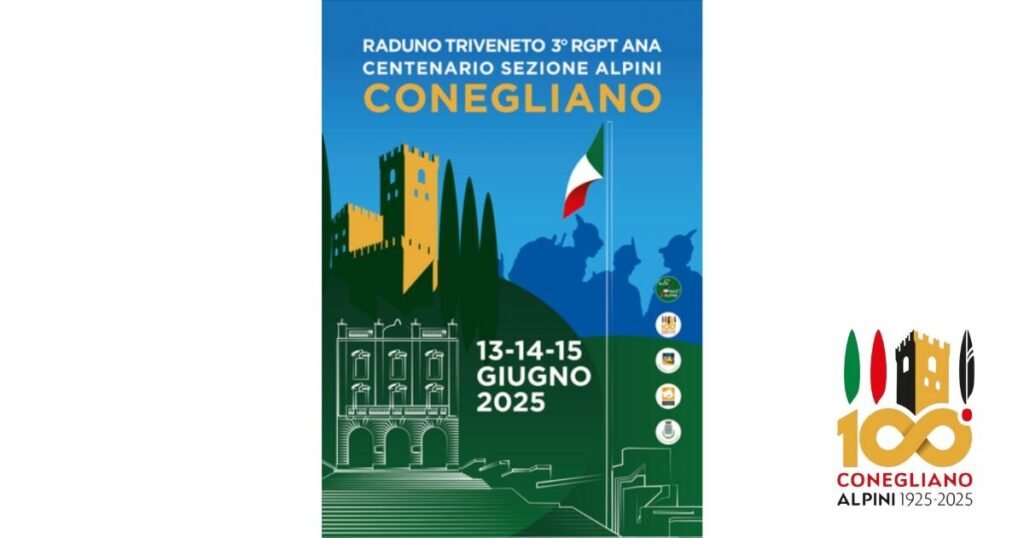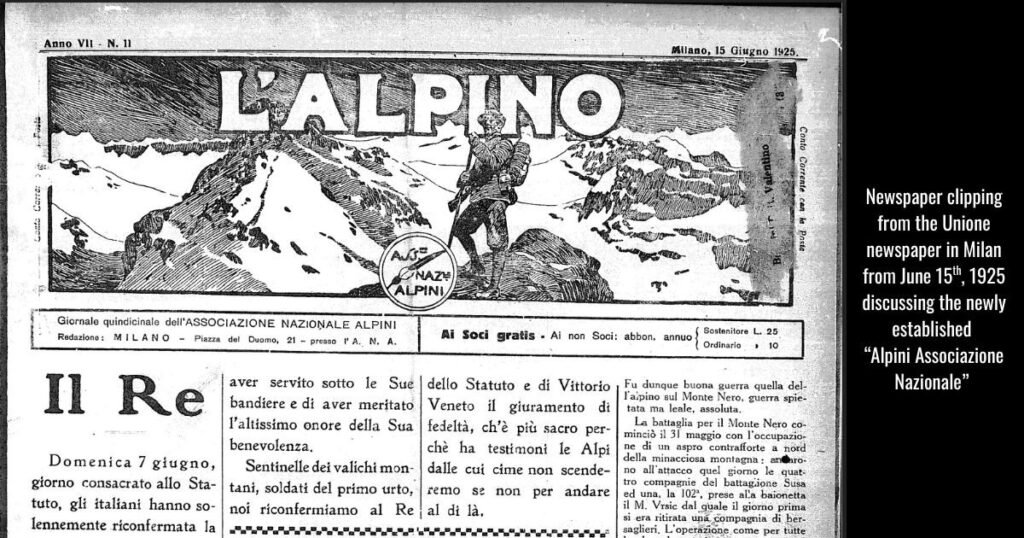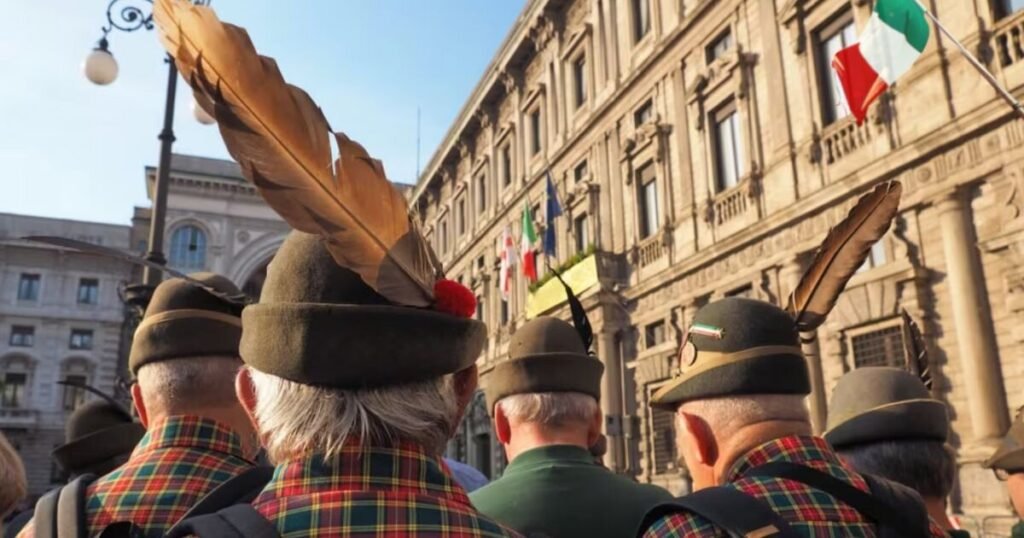
Who Are The Alpini: Italy's Longest Serving Mountain Military Troops
If You've Ever Seen Men Of A Certain Age In Northern Italy Wearing These Wool Caps Festooned With Raven Or Eagle Feathers, You've Witnessed A Proud Living Symbol Of Italian History

- Nathan Heinrich
For the past several years, I have lived in the Northern Italian City of Conegliano in the region of Veneto. It’s not uncommon to see symbols of the Alpine soldiers (Alpini), who became famous during World War 1, in this part of Italy.
This spring, I began seeing signs and posters announcing an upcoming 100-year celebration of the Alpini, which would be taking place in mid-June. As our city loves any excuse to celebrate, and I hadn’t planned to be in Italy during much of June, I mostly ignored what I assumed would be just another modest-sized gathering in the historic center.
However, after returning to Conegliano from a trip to California, I found my city transformed. Every lamppost, building, and portico had been draped in red, white, and green.
The air was thick with a sense of preparation and expectation.
Maybe this was going to be a bigger deal than I had originally assumed, I thought as I went for my morning and evening walks through the city, with signs of growing anticipation everywhere.
A Once In A 100-Year Celebration
The following day, the downtown area, where I live, was turned upside down.
Our city, with a modest population of 35,000 residents, was suddenly bursting with nearly 100,000 additional visitors.
That night, when I went for my evening walk around 11 pm, I could barely get through the crowds.
Most of them were older men wearing the traditional Alpini hats, and they were having the time of their lives.
Even though it was close to midnight, every bar and restaurant was standing room only, not to mention the main square, which was bursting with 90% mature Italian men.
It was as though Italy’s largest family was having a reunion, and the only family members who bothered to attend were the dads, uncles, and grandfathers – and they were all wearing a version of the same uniform.
For the next three days, I just soaked it up, realizing that it would be another hundred years before this celebration happened again.
3 Days With The Alpini
As an outsider with no personal connection to this proud and passionate group of mountain warriors, I felt a sense of patriotism by proxy as I mingled with the jolly throngs of men who sang, drank, marched, and played instruments through my typically quiet little town for three full days.
Most of the men were between the ages of 50 and 80, but many were older and younger. They shared a warm and natural camaraderie that I have never before witnessed.
Lifelong friends and family members, along with strangers, came together as comrades unified by a shared sense of honor and respect.
Perhaps it’s the shared stories of struggle and loss suffered during the First World War, passed down for generations, that served as the common bond for those who gathered to celebrate.
It could also be that it has become part of their identity. Although they did not personally fight in the snow and ice-covered Alps over 100 years ago, they feel that they could and would if they ever had to.
Whatever the reason for their intensity and enthusiasm, it was deeply moving.
To say, ‘you had to be there to experience it yourself’ is a gross understatement.
But as usual, I was ready with my camera, and I captured several hours of footage from this once-in-a-lifetime event. I was quite fortunate that the three-hour parade just happened to march right past my balcony.
I edited the videos I took down to a few minutes to share with you.
After a bit of digging, I unearthed lots of history about the Alpini for those who are eager to learn more about these remarkable Italian troops.
Continue reading to learn more…
The Beginning of the Alpini
The name Alpini comes from the Alps. Their original mission was simple but demanding—protect Italy’s mountainous northern border from invasion.
The first Alpini units were established by royal decree on October 15, 1872. Captain Giuseppe Perrucchetti, a former staff officer, designed the unit organization. He believed that men born in mountainous areas were best suited to fight in those regions. He was right.
The first regiments were raised in northern Italy. The new military corps of the Italian Army was made up of locals—farmers, shepherds, hunters—men who already knew how to survive the snow and cliffs. These soldiers formed the foundation of the Italian Army’s specialist mountain infantry.
The inception of these units was Italy’s response to threats from the north. Austria-Hungary, France, and the German Empire all bordered the young Italian state. The Alpini were designed as a defensive unit, trained for high-elevation combat of the modern era. They were the first military group in the world to specialize in mountain warfare.
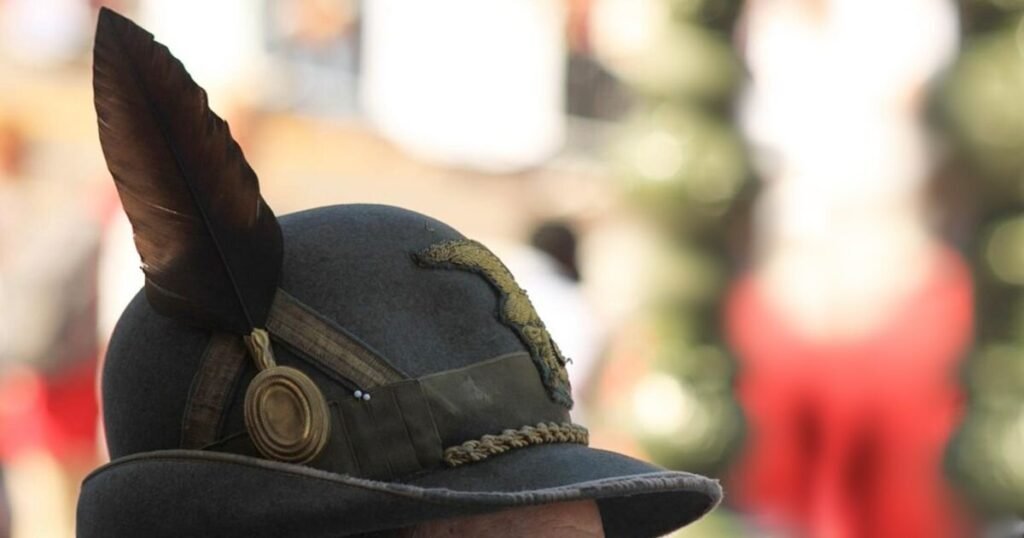
The Outfit: Le Penne Nere
One of the most recognizable symbols of the Alpini is their hat—the cappello alpino. Made of gray or greenish felt, it’s shaped to tilt slightly, with a wide brim and a decorative cord. But what sets it apart is the feather – le penne nere.
Every individual soldier of the Alpini wears a feather. But not all feathers are the same. Officers wear white feathers, NCOs (Non-Commissioned Officers) wear gray, and regular troops wear black feathers.
The feather became a badge of honor, and even retired Alpini keep their hats. The color and position of the feather speak to the wearer’s rank and pride. It’s not just part of a uniform. It’s part of their identity.
The uniform is also practical. Heavy wool, durable boots, and gear built for alpine conditions. Many Alpini battalions carry climbing ropes, bolt-action rifles, and wear crampons in snow. During World War I, ski battalions were formed for winter patrols.
The First World War - "The War of Snow"
World War I changed everything. Italy entered the war in 1915. The front lines were drawn not in fields or cities, but on cliffs, glaciers, and narrow ridgelines. The Italian Front stretched across the Alps and Dolomites. This became the War of Snow.
The Alpini were deployed along Italy’s northern mountainous borders. They fought on Monte Nero, Monte Pasubio, and Col di Lana. Their enemies were the Austro-Hungarian Kaiserjäger and the German Alpenkorps—also elite mountain troops. What followed was a three-year campaign unlike anything before.
This was one of the most demanding mountaineering wars in history. Entire battalions lived in ice caves and huge underground bases dug into the mountains. Heavy combat took place at high altitude, where frostbite killed as many men as bullets. Alpine units used cable cars to transport gear across valleys. Alpini regiments clashed with their Austrian counterparts on narrow ledges and mountain peaks.
The Monte Marmolada Battalion, for example, fought under constant avalanches. Late spring brought melting snow and more death. Battles often froze in stalemate, with both sides holding a single ridge or defensive position for months.
During this time, canti alpini—traditional songs—became part of the unit culture. These peaceful ballads told of lost comrades, the beauty of the mountains, and the cruelty of war. Many of these songs are still sung today by the National Alpini Association and active Alpini units.
Italy’s Alpini suffered heavy losses. But their bravery earned them national respect. Many units were awarded gold medals, silver medals, and bronze medals for military success.
The White House Visit
After the First World War ended, the Alpini’s name had become known far beyond Italy. In 1919, a delegation of Alpini soldiers was invited to the White House.
They met with President Woodrow Wilson. The visit was both symbolic and political. The U.S. had joined the war late, but had taken note of Italy’s difficult fight along the Alpine front.
The Alpini brought their hats, their songs, and gifts for the American president. It was the first time many Americans had heard of these mountain troops. The visit helped form stronger ties between Italy and the U.S., and it honored the role of the Italian Alpini in the Allied victory.
Between the Wars and World War II
In the years following World War I, the Alpini continued to evolve. Their role in the various wars of the Kingdom of Italy expanded. In East Africa, they fought the Ethiopian Army under harsh desert and mountain conditions. Units also took part in the Boxer Rebellion and Balkan campaigns.
When World War II began, the Alpini were once again deployed to extreme terrain. They fought in Greece, Yugoslavia, and the Soviet Union. The Cuneense Divisions, Taurinense Brigades, and Julia Division were sent to the Eastern Front in 1942.
There, in the Russian winter, they endured one of their darkest chapters.
The Soviet campaign led to a crushing defeat. Outnumbered and under-equipped, many Alpini regiments were surrounded. The retreat across the Russian steppe became a legend in Italy. Thousands died in snow and ice, often with little food or ammunition. Survivors returned home broken but honored.
Their endurance in the face of impossible odds became part of the comprehensive history of Italian mountain troops.
Cold War and Beyond
After World War II, the Alpini remained a special corps within the Italian military. During the Cold War, they trained for defensive missions in the Alps against a potential Soviet invasion. New alpine divisions were created, including mountain artillery and alpine infantry brigades.
Training focused on elite mountain warfare, high-elevation survival, and winter combat. Many alpine troops headquarters were built into mountainsides. Ski training, rock climbing, and live-fire exercises were routine. During peacetime, Alpini soldiers also helped in natural disasters—avalanches, earthquakes, and floods—especially in remote alpine villages.
The Alpini’s strong esprit de corps became central to their identity. Veterans formed the National Alpini Association, preserving history and organizing reunions. Canti alpini and traditional songs continued to be sung. Every year, thousands of veterans gather to celebrate their shared past and the beauty of the mountains they defended.
The Centennial in Conegliano
In June 2025, the town of Conegliano, in northern Italy, hosted the 100-year celebration of the establishment of “Alpini Associazione Nazionale” (the National Association of the Alpini) in June of 1925.
This event, which highlighted the contribution of the Triveneto area (the northeast regions of Veneto, Friuli Venezia Giulia, and Trentino-Alto Adige), was a tribute to the Alpini’s lasting presence.
It was a major three-day event from June 13th to the 15th. While the city of Conegliano has a population of about 35,000, it is estimated that over 100,000 people gathered for the parade and festivities, including active Alpini units, veterans, and families from all across Italy.
The city was filled with alpini battalions, dressed in full uniform.
One could see black feathers, white feathers, and gray feathers, all standing in tribute, many to their fathers and grandfathers who served and put their lives on the line to defend their country.
Veterans marched beside current soldiers. Alpine units displayed gear used from WW1 to the Cold War. Artiglieria da montagna pieces stood on public squares.
The event included parades, concerts of peaceful ballads, and visits to local monuments.
The Italian government used the celebration to thank the Alpini for their role in Italy’s past and present. Speeches honored their resilience, their courage, and their place as a part of the Italian cultural heritage.
Young soldiers shook hands with old survivors. It was a good time, and it was visible to everyone that the Alpini spirit had not faded.
Today's Alpini
Today, the Alpini are still active. They form part of Italy’s rapid response force for mountain regions. Their training focuses on snow rescue, mountain warfare, and peacekeeping missions. They regularly train with US special forces troops in training exercises.
They also serve in NATO and the United Nations. Modern operational brigades still carry the same name—Alpini Regiments—and wear the same distinctive headdress.
Italy still has one of the oldest active mountain infantry units in the world. And the first English-language history of this elite troop is still being written by historians and veterans alike. Many military districts in the Alps still house first line reserve battalions and peacetime Alpini battalions.
Their presence is still seen at events, at national holidays, and in remote alpine villages. Some active battalions still train near Monte Pasubio, Monte Nero, and other sites from the First World War.
The unit organization remains based on small, adaptable groups. Soldiers are trained in essential skills like rock climbing, navigation, and winter survival. Bolt action rifles have been replaced with modern arms, but the mountains demand the same strength.
And the cappello alpino with its black feather remains.
Watch This Documentary In Italian ⬆️ 🇮🇹
Why the Alpini Still Matter
What does it mean to be an individual soldier of the Alpini? It means carrying more than a pack and rifle. It means being part of a legacy built on snow, stone, and sacrifice. The Alpini’s name stands for defense of the high ground—Italy’s highest mountains and coldest front lines.
They have fought on ice, in forest, in desert, and against some of the toughest armies in history. From the Austro-Hungarian Kaiserjäger to the German Alpenkorps, from the Soviet Union to the Ethiopian Army, they have faced the harshest environments—and endured.
Their story is not just about war. It’s about the mountain range they were born to protect. It’s about survival, tradition, and brotherhood.
So next time you see that feather, remember what it means. It’s not just a symbol. It’s a mark of those who have stood where few others could—and still do.

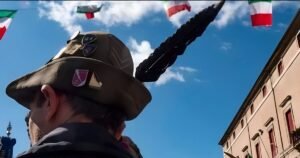



Last Of Italy’s Greatest Generation: Italy In History From WWII


Email Nathan At: Nathan@AllRoadsLeadToItaly.com
Share This Post
Author Info:

Nathan Heinrich
Nathan is a writer, designer & horticulturist. He is the founder and Editor-in-Chief of "All Roads Lead to Italy" Magazine & host of the Top-10 Travel Podcast, "I'm Moving To Italy!". Nathan was born and raised in a 6th generation farming family in Northern California, he is currently, a dual Italian citizen, living in the Prosecco Valley of Northern Italy, near Venice.

